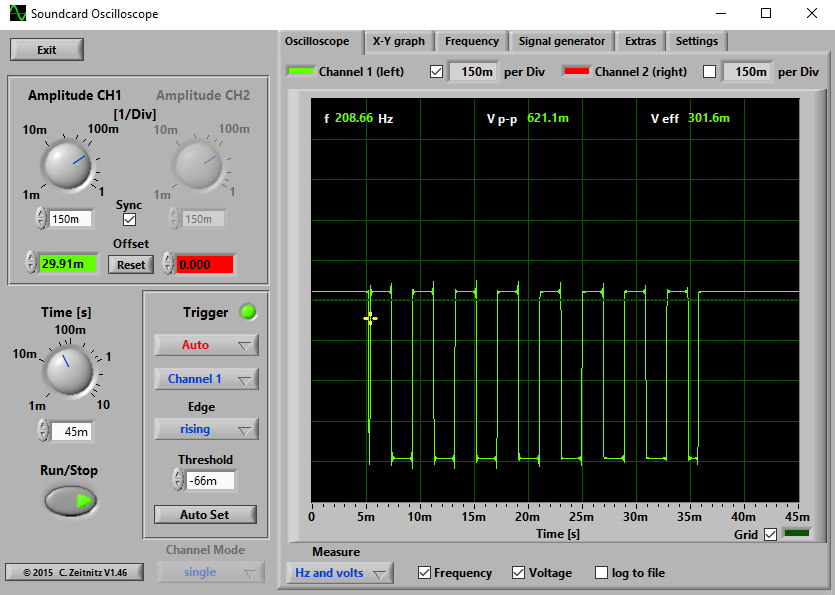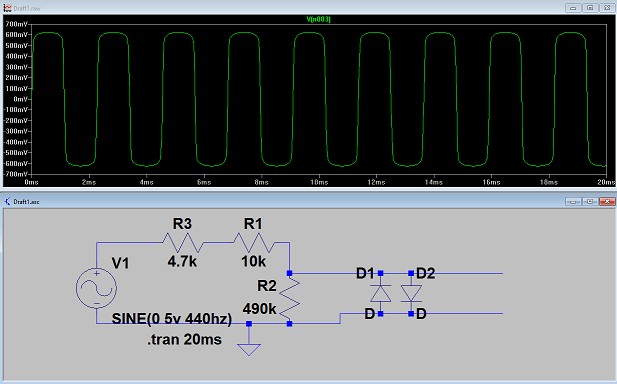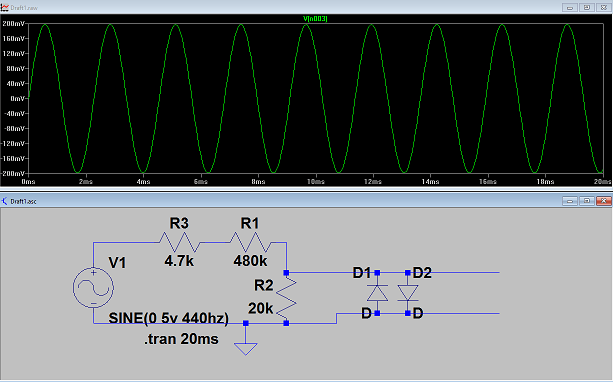Intro
 An oscilloscope is a valuable piece of test equipment that can help in analyzing signals. It helps to be able to see what is happening with a signal in terms of voltage and time. A sound card’s mic or line-in combined with oscilloscope software makes for a cheap piece of test equipment, but with some major shortcomings. A sound card is designed to work with frequency’s in the audible range 20-20khz, sound cards do oversampling at 44khz or 96khz. Although to get enough sample points to get something view-able/useful with a sound card, the source signal will probably need to be around 20khz and under. Sound card’s mic and line-in are made to connect with audio equipment, the interface isn’t designed for high voltages, so to avoid damaging the interface , the signal needs to be conditioned. Oscilloscope software probably wont help with viewing voltage levels of a signal. So… there’s software that can allow a sound card to be used as an oscilloscope, however it’s only useful for small signals and low frequencies.
An oscilloscope is a valuable piece of test equipment that can help in analyzing signals. It helps to be able to see what is happening with a signal in terms of voltage and time. A sound card’s mic or line-in combined with oscilloscope software makes for a cheap piece of test equipment, but with some major shortcomings. A sound card is designed to work with frequency’s in the audible range 20-20khz, sound cards do oversampling at 44khz or 96khz. Although to get enough sample points to get something view-able/useful with a sound card, the source signal will probably need to be around 20khz and under. Sound card’s mic and line-in are made to connect with audio equipment, the interface isn’t designed for high voltages, so to avoid damaging the interface , the signal needs to be conditioned. Oscilloscope software probably wont help with viewing voltage levels of a signal. So… there’s software that can allow a sound card to be used as an oscilloscope, however it’s only useful for small signals and low frequencies.
Parts
- 2x 500k audio pot
- 4x 1N4148 diode
- 2x 4.7k resistor
- Audio cable
Software

And here’s some more sound card oscilloscope options:
Winscope
Zelscope
Schematic

Design
Hardware
This hardware design is adapted from Steve Garratt and his sound card oscilloscope. This is a simple hardware design that will help to keep a test signal in a safe range for the sound card. A diode limiter circuit will clip the voltage at +.6v to -.6v. A notable word here is “clip” this signal in this simulation run is clipped, the signal above .6v and below -.6v is cut off.

This is where the potentiometer comes in, to drop the signal voltage down to a range under the 600mv to -600mv.
